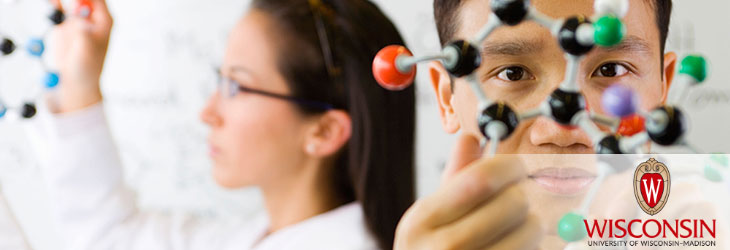Drug Discovery & Development

Biosynthetic Gene Cluster That Produces the Natural Antibiotics Platensimycin and Platencin
WARF: P07515US
Inventors: Ben Shen, Michael Smanski
The Wisconsin Alumni Research Foundation (WARF) is seeking commercial partners interested in producing the natural products platensimycin and platencin, and generating their structural analogs by manipulating their biosynthetic machinery for drug discovery and development.
Overview
As the incidence of antibiotic resistance among bacteria continues to rise, the discovery of new antibacterial compounds has become increasingly critical to fighting infectious disease. According to the Food and Drug Administration, approximately 70 percent of bacteria that cause infections in hospitals are resistant to at least one of the drugs commonly used to treat infections. New types of antibacterial compounds are needed.
Two potential antibiotics, platensimycin and platencin, are produced by the bacteria Streptomyces platensis. These molecules are potent inhibitors of fatty acid biosynthesis and are effective against Gram-positive pathogens, including methicillin- and vancomycin-resistant Staphylococcus aureus and enterococci. Because the enzymes these molecules target are not found in mammals, the risk of side effects is reduced.
However, natural S. platensis bacteria produce platensimycin and platencin in minute quantities, and total synthesis of complex natural products such as platensimycin, platencin and their analogs is difficult and has limited practical value. Improved methods of producing these natural products and generating their structure are needed.
Two potential antibiotics, platensimycin and platencin, are produced by the bacteria Streptomyces platensis. These molecules are potent inhibitors of fatty acid biosynthesis and are effective against Gram-positive pathogens, including methicillin- and vancomycin-resistant Staphylococcus aureus and enterococci. Because the enzymes these molecules target are not found in mammals, the risk of side effects is reduced.
However, natural S. platensis bacteria produce platensimycin and platencin in minute quantities, and total synthesis of complex natural products such as platensimycin, platencin and their analogs is difficult and has limited practical value. Improved methods of producing these natural products and generating their structure are needed.
The Invention
UW-Madison researchers have isolated and sequenced the gene clusters encoding the biosynthetic machineries for platensimycin and platencin production. The cloned pathways provide a means of synthesizing a library of novel platensimycin and platencin analogs. They also provide a means of producing large amounts of platensimycin and platencin by microbial fermentation.
Applications
- Producing large quantities of platencin and platensimycin
- Creating a library of platensimycin and platencin analogs
Key Benefits
- Provides an efficient means of producing two natural antibiotics
- Pathways can be modified to create novel analogs of platensimycin and platencin.
- Allows platensimycin and platencin to be produced in other cells, in addition to S. platensis cells
- Platensimycin and platencin kill bacteria in a different way than other clinical agents.
- No known clinical resistance to these antibiotics exists.
- Platensimycin and platencin result from terpene biosynthesis, not polyketide synthesis.
Publications
For current licensing status, please contact Rafael Diaz at [javascript protected email address] or 608-960-9847
- Smanski M.J., Peterson R.M., Rajski S.R. and Shen B. 2009. Engineered Streptomyces platensis Strains That Overproduce Antibiotics Platensimycin and Platencin. Antimicrob. Agents Chemother. 53, 1299-1304.
- Click here for a news release describing this technology.